Based on an interview with Bishop Daniel taken by the author in Fr. Pimen’s house.
On Sunday, August 14, 1988 (N.S.), the Synod of Bishops of the Russian Orthodox Church Abroad consecrated the newly-tonsured Hieromonk Daniel as Bishop of Erie. Participating hierarchs were Metropolitan Vitaly, Archbishop Anthony of San Francisco and Western America, Bishop Alypy of Chicago and Detroit, and Bishop Hilarion of Manhattan.
The consecration of an Orthodox bishop is hardly an everyday occurrence, but this particular consecration was especially unique in that it was conducted according to the rubrics and usages of the Old Rite, which is reportedly only the second time this has been done in the Russian Orthodox Church since the Old Rite was anathematized by the Council of Moscow in 1667.
Bishop Daniel was designated Bishop of Erie and Protector of the Old Rite. He will have under his omophorion all the Synod’s Old Ritualist communities, including the parish in Erie, Pennsylvania, and the mission in Woodburn, Oregon. Foremost among his labors will be the ongoing efforts to reconcile to the Russian Orthodox Church those Old Believers still outside her salutary fold.
Although thoroughly conversant with the Old Ritual and its history, and personally acquainted with hundreds of Old Believers in Europe, Australia and the Americas, Bishop Daniel was not himself born into the Old Rite. Numbering among his ancestors two admirals of the Imperial Russian Navy and the last Russian governor of Alaska, Bishop Daniel was born Dimitry Borisovich Alexandroff in the city of Odessa on the Black Sea. His father had fought against the Bolsheviks in the Civil War immediately after the Revolution of 1917, but had elected to remain in Russia following the defeat of the White armies. Boris Alexandroff finished his education in the 1920’s, married and fathered three children. He was employed doing research at the Odessa Geophysical Observatory when Dimitry, the youngest of his children, was born on September 15,1930.
Boris wanted nothing more than to live, work and raise his children in peace. But this was not to be. The infamous purges began in the mid-1930’s and spread their venom throughout the suffering body of Mother Russia, touching every city, every village, every family. The Alexandroffs were not spared. As one who had actually borne arms against the Bolsheviks, Boris Alexandroff was considered an “enemy of the people”. He was dismissed without cause from his post at the Observatory in 1937.
Boris spent the next several months looking for work. Early in 1938, he found employment as a machinist at a factory in the industrial city of Zlatoust in the Ural mountains. He sent for his wife, Elena, and children, Maria, Sergei, and Dimitry. They arrived in Zlatoust on April 1,1938, but their happiness at being reunited with Boris was cruelly cut short. Three agents of the NKVD (People’s Commissariat for Internal Security) came to their apartment on the evening of April 5,1938, and took Boris away. His family never saw him again, or even heard from him. Later on, they were told he had been exiled “without privileges of communication,” a thinly-disguised euphemism for death. Only God knows whether he was executed outright by the NKVD, or died slowly in one of the labor camps in Siberia or the Far East.
With Boris gone, Elena took a job playing the violin at the cinema in Zlatoust to provide for herself and the children. They waited anxiously for some word from Boris, but no word ever came. In 1939, Elena resolved to take the children and return to Odessa. But as family members of an “enemy of the people,” they were not permitted to enter the city. Instead, they went to the Crimea and found refuge with distant relatives who were living at that time in Yalta.
On June 22,1941, Nazi Germany and its allies invaded the Soviet Union. German troops were in the suburbs of Moscow by October, and the entire Ukraine was in Axis hands. Romanian divisions occupied Odessa and the Crimean peninsula.
Romania was soil unencumbered by any notion of militant atheism in those days. Most Romanians were Orthodox. So it was not surprising that they permitted Russians and Ukrainians to reopen many churches in those areas under their direct control.
And in 1942 they allowed Elena Alexandroff and her children to return to Odessa. It was at this time that young Dimitry began in earnest to learn the services of the Orthodox Church. His sister, Maria, married a young man who later became a priest. And Dimitry served as psalomshchik in his brother-in-law’s parish in Odessa.
It was during the Romanian occupation that Dimitry Alexandroff first became aware of the Old Believers. In 1943 he came upon a copy of The Life of Archpriest Avvakum by Himself. Father Avvakum’s struggle made a lasting impression on Dimitry and led him to read other accounts of the Old Ritualist schism.
Early in 1943, the fortunes of war turned against the Axis. Soviet forces kept the Wermacht out of Leningrad and Moscow, crushed the German Sixth Army at Stalingrad, and went over to the offensive. The Red Army steadily pushed the Germans back over the very same territory they had conquered so quickly in 1941. By the end of the year, it was evident to all that the Axis was in retreat on every front.
The return of Communist rule was a grim prospect for many people in the Ukraine. After two years’ respite from Soviet terror, Elena Alexandroff and her two sons decided to quit Russia with the Romanian forces. In 1944, they left Odessa and joined the human tide of refugees flowing westward from communist oppression toward a better life under the setting sun.
One stormy evening shortly after they arrived in Rumania, the Alexandroffs found shelter among a group of hardy Russian Old Believer peasants, themselves descendants of refugees from religious persecution in Russia during the reign of the Empress Catherine the Great. Elena and her sons were cold and soaked to the skin, but their Old Believer hosts provided a warm place out of the weather and spirits in quantities sufficient to keep off the ague. Young Dimitri so impressed these Old Believers with his knowledge on liturgical matters that they offered Elena a pile of gold as tall as the lad himself if she would only let them keep him and put him in the way of becoming a priest. Whether or not they actually had the gold to make good on their offer, their notion seems strangely prophetic in retrospect.
Whether her reaction might have been at the time, the Old Believers’ obvious enthusiasm for her son gave Elena some anxious moments the next morning. Dimitry and her mother were separated for a few hours, and while she searched for him, it crossed her mind more than once that the Old Believers had kidnapped him. Happily, mother and son were soon re-united, and together they continued their exodus to freedom.
By mid-1945, the Axis was history, elements of the Red Army were in Rumania, and Elena and Dimitry Alexandroff were in Switzerland.
It was in Switzerland, in the city of Bern, that Dimitry first came upon another aspect of the Old Ritual, the ancient znamenny chant which it has preserved from the first centuries of Christianity in Russia. The future bishop was walking one day along one
of the streets in downtown Bern when something caught his eye in the window of a book store. There he saw a large tome propped up and sitting open to reveal an illuminated page with a verse beginning with the words “Tvoya pobedityel’naya dyesnitsa…” (“Thy victorious right hand…”) in large print. Above each line of text was a line of kryuki (numes) indicating how the text indicating how the text was to be sung. These numes were the form of musical notation used exclusively in all the parishes of Orthodox Russia before the introduction of five-line staff notation in the eighteenth century. By then, the Russian Orthodox Church had anathematized the Old Rite because its adherents refused to accept the liturgical reforms of Patriarch Nikon. So it is no surprise that they refused to accept the Western form of musical notation as well, holding fast to the kryukovoye peniye (numatic notation) they had received from their fathers and grandfathers. Dimitry Alexandroff had practically no contact with Old Believers in the Soviet Union. Yet here was an Old Rite okhtai (Book of Eight Tones or Octoechos) beckoning from a display window in Bern. Dimitry recognized the text, but the numes were strange to him. Bishop Daniel gives a talk to students of Russian Church History-424. HTS. May 8, 1997ere Archbishop Laurus, now hegumen of the Monastery, Bishop Alypy of Chicago and Detroit, and Archbishop Seraphim, now retired
The young refugee didn’t have the means to buy the book of chant that had caught his eye. But in the days that followed, he spent many hours reading everything he could find on the subject in the local libraries.
Elena and Dimitry arrived in the United States in 1949 and settled in southern New Jersey. Dimitry quickly learned English and graduated from the public high school in Vineland. At that time there was a scattering of Old Believer families in the area where Dimitry and his mother lived. Soon he was introduced to the noted Old Believer iconographer, Pimen Sofronov. The old master took a liking to the bright young man from Odessa. He found Dimitry’s native ability with a brush good enough to use him as an artisan. For a time the two traveled together from parish to parish, beautifying and embellishing churches with images of Christ, His angels and His saints. Their friendship grew, and Dimitry came to know the Old Believers’ way of life, to appreciate their approach to prayer and worship, and to love them as people.
From 1952 to 1956, Dimitry was a seminarian at Holy Trinity Seminary in Jordanville, New York. He graduated with honors in 1956, but did not received a diploma until the seminary was itself accredited in 1958. Among his classmates w
By the time he had completed his studies at Jordanville, Dimitry had resolved to make the Old Believers his life’s work. Specifically, he sought to learn as much as he could about the Old Rite, to preserve its spirit of worship and to help bring as many of its adherents as possible back into the Church.
More than forty Old Believer families arrived in the United States from Turkey in 1963. Almost all of them settled in New Jersey and found employment in factories around Lakewood and Millville. Dimitry often visited them, and was concerned that they had no priests. He communicated this concern to the Synod of Bishops.
In 1965, Metropolitan Philaret ordained him to serve in the Old Rite, blessing him to work among the Old Believers in New Jersey and elsewhere.
In 1967, a community of Old Believers in Canada invited him to become their bishop. Father Dimitry replied that he would consider that responsibility only if they would recognize the authority of the Synod of Bishops of the Russian Orthodox Church Abroad (ROCA). After giving the matter some thought, they rejected this condition, citing the anathemas pronounced against the Old Rite by the Moscow Councils of 1656 and 1667. They did not feel they could acknowledge the authority of any bishops whose predecessors had in effect outlawed the liturgical traditions of the Russian Orthodox Church. Father Dimitry petitioned the Synod of Bishops to remove these anathemas. And as reasonable as that course of action seems to us now, at the time it was difficult for some hierarchs to accept. The matter was referred to a committee for study where it slowly died amid faint rumblings that Father Dimitry was motivated by episcopal ambitions.
In the years that followed, Father Dimitry kept busy painting icons, printing , designing and building new churches, refurbishing old ones and keeping in contact with an ever widening circle of Old Believer friends.
In March, 1974, the noted author, Alexander Solzhenitsyn, was expelled from the Soviet Union. Shortly thereafter, Metropolitan Philaret wrote to him and asked his opinion on the divisions among Orthodox jurisdiction in the Free World. Solzhenitsyn began his reply with a disclaimer to the effect that he had no special information or insight on this subject. But then he offered a lengthy and thoughtful analysis of the state of Orthodoxy in the Soviet Union, including an eloquent appeal for reconciliation with the Old Believers, who, he wrote, had suffered so unjustly at the hand of the “official” Church.
Solzhenitsyn’s response got lots of attention – and Father Dimitry’s long forgotten petition was resurrected. The Synod asked Father Dimitry to draft a decree rescinding the anathemas which the Councils of 1666 and 1667 had proclaimed against the Old Rite. Father Dimitri soon provided the ROCA hierarchs with such a draft for their consideration. In September, 1974, the Synod of Bishop ratified a decree based on Father Dimitry’s draft.
In their decree, the ROCA hierarchs declared the anathemas against the Old Rite to be null, void and as if they had never been. They acknowledged the Old Rite to be Orthodox and salutary. They called upon the Old Believers to respect the new Rite as worthy of equal honor as the old. They permitted the use of the Old Rite in any Synod parisli that wishes to do so. They promised to let Old Believers who join the Synod keep the Old Rite without interference or pressure to accept any contemporary rites. They even promised to ordain priests for the Old Believers who joined the Synod. And having done all this, the ROCA hierarchs sat back and waited for the Old Believers’ reaction.
Three-hundred-plus years of antipathy can’t be overcome with the stroke of a pen. The momentum of negative feelings and bitter memories can be arrested only by patience, love and an abundance of positive human contacts over a period of months and years. After generations of persecution and harassment, the Old Believers had come to look upon the official Church as the greatest repository of evil; they had long since ceased to expect anything good to come to them from that quarter. And although the Synod’s 1974 decree on the Old Rite was a very important step indeed, it must be recognized that it was just one step of a very long journey, the end of which is not as yet in sight
And yet, long though that journey may be, we have already come a considerable distance in the years since 1974. Positive contacts that had begun even before 1974 have taken on greater significance since the anathemas against the Old Rite were rescinded. Such contacts continue, and some of them are significant enough to be called milestones on the long road to reconciliation.
Among these milestones are the visits Father Dimitry has made to the Old Ritualist community in Erie. Approximately ten years ago, Pimen Simon, the dynamic young nastavnik (spiritual leader) of the Nativity of Our Lord Russian Orthodox Church on Front Street in Erie, came to the painful awareness that neither he nor his congregation enjoyed the fullness of Orthodoxy without the Body and Blood of Christ. An attorney who had left a successful law practice to serve his community, Pimen had studied the Old Ritualist schism from partisan religious as well as objective secular perspectives. His studies had led him to appreciate the distinction between the dogma and ritual. And because he had been born and raised in the United States, he had never personally experienced persecution from the official Church as his ancestors had in Europe. In fact, he enjoyed particularly good relationship with Father Theodore Jurewicz, who was then the pastor of the Synod parish in Erie, Nativity of Our Lady, and who is now his assistant pastor. Pimen was also aware of the aforementioned decree drafted by Father Dimitry Alexan-droff, and the two corresponded sporadically in the early 1980’s.
In 1982, Pimen Simon and a few members pf his congregation attended a Synod conference of clergy and laity hosted by St. John the Russian parish in Ipswich, Massachusetts. He and those with him were very warmly received by the Synod faithful. And they were favorably impressed by the substance of the discussions there, the way the services were conducted and the sense of community among the people and their shepherds. But despite the warmth and substance, Pimen was inwardly troubled by the differences in ritual he observed there. He contacted Father Dimitry and invited him to Erie to discuss his reservations and to help him decide what to do.
And so it was that on the feast of the Dormition of the Mother of God in 1982 Father Dimitry first visited the Old Believer community in Erie. He stood in the rear of their church and observed their worship. Later on, he met several of the parishioners and spent a long time in conversations with Pimen Simon.
Pimen and his flock sought specific assurances from the Synod that they would be permitted to continue in the Old Rite. Once these assurances had been given, the parish voted, in December, 1982, to place itself under the protection of the Synod of Bishops of the ROCA. Pimen Simon was ordained to the priesthood the following July. And on the feast of the Dormition in 1983, exactly one year after his first visit to the parish in Erie, Father Dimitry Alexandroff stood shoulder to shoulder with Father Pimen Simon at the Royal Doors of the newly-consecrated Church of the Nativity of Our Lord as they distributed the Holy Mysteries to very nearly the entire congregation. Old Believers representing more than three hundred households received the Body and Blood of Christ for the very first time in their lives on that day in Erie, thereby entering into the fullness of the Church. Milestones.
The consecration of a bishop for the Old Rite is another, very important milestone for Old Believers everywhere. Despite lingering pockets of misinformation and faint shadows of antipathy toward the Old Ritual scattered here and there throughout the ROCA, the Synod of Bishops has clearly underscored its intent to put all bitterness and recriminations behind us. By providing a bishop for the Old Rite, ROCA hierarchs have restored it to the full canonical status and liturgical dignity that had been lost by the end of the 17th century.
Shortly before he went to Jordanville to be tonsured a monk, Father Dimitry was reunited with his sister, Maria, who arrived from the Soviet Union on a visit. They had last seen each other in 1944 in Rumania. Matushka Maria’s husband, still an Orthodox priest under the Moscow Patriarchate, now has a parish near Moscow. She was pleasantly surprised at her brother’s consecration.
On Thursday, August 11 (NS), Father Dimitry was tonsured at Jordanville, taking the name Daniel. His consecration took place at Synod the next Sunday, as we have noted above. On Friday, August 11 (NS), Father Dimitry was tonsured at Jordanville, taking the name Daniel. On Friday, August 26, Bishop Daniel went to Erie to greet his flock and to be received into his cathedral. His sister, Matushka Maria, accompanied him. A solemn vigil was celebrated on the eve of the Dormition, and a hierarchical Liturgy the next day. The parish’s two priests, two deacons, two sacristans and others who served in the altar and on the cliros blended their efforts so smoothly that would think they had been doing hierarchical services together for years. In his homily from the Royal Doors, Bishop Daniel recalled his first visit to the parish exactly six years before, and the first time he had served there as a priest, just one year later. He commented that in the course of those years, the parish had been blessed, not only with the restoration of the priesthood and the Holy Mysteries, bul with the fullness of the hierarchy as well.
Moved by the majesty of the services, the warmth of the parishioners and the cheerful sight of the cathedral’s bright, golden domes sparkling under a blue August sky, Matushka Maria remarked to this writer how pleased she was to see “a little corner of Russia” thriving in America. When I responded that the congregation was more American than Russian, having gradually lost the language and ethos of Russia after nearly four generations in Pennsylvania, she smiled and shook her head. “Never mind all that!” she said. “They’ve kepi the main thing! They’ve kept the Faith!” Later on, she credited Father Pimen with continuing the work of St. Vladimir, Grand Prince of Kiev, who brought Christianity to Russia one thousand years ago.
Father Thomas Marretta, pastor of the Nativity of Our Lady parish in Erie, joined Bishop Daniel, Fathers Pimen and Theodore and the faithful at the meal in the parish community center after Liturgy on Sunday, and Fathers Andrew Alexiev and Neil Connaught drove in on Sunday afternoon from Cleveland and Buffalo, respectively. The two out-of-town priests took part in the vespers, matins and Liturgy that evening and the next morning for the feast of the Translation of the Image-Not-Made-by-Hands.
Resting between services on Sunday afternoon, Bishop Daniel spoke affectionately of Archbishop Anthony of San Francisco and Western America, who was a prime mover in his consecration, and who has long been supportive of his work among the Old Believers. He also noted that among those who helped bring about his consecration were the many young ladies who had turned down his proposals of marriage in the late 1950’s and early 1960’s.
Their loss is our gain… Many years, Vladyko!
(“Bishop Consecrated for Old Rite,” Orthodox America No. 3, 1988)

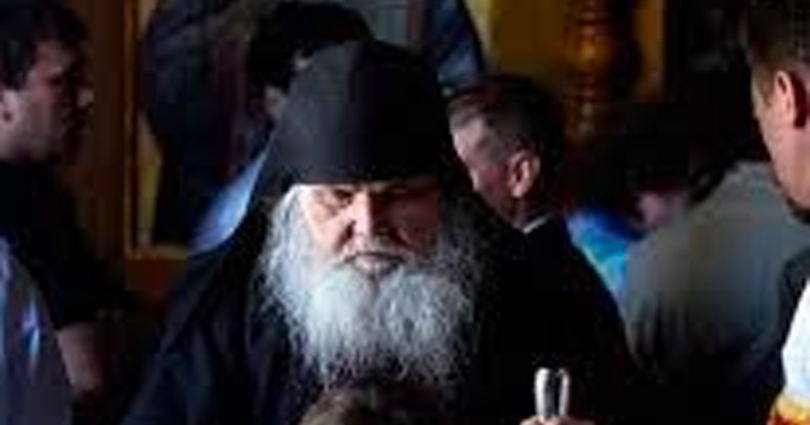
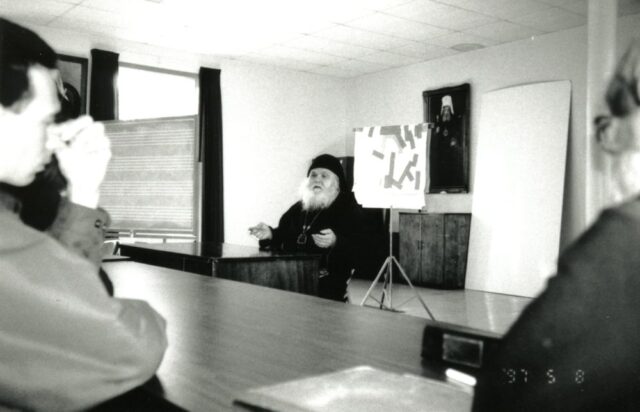
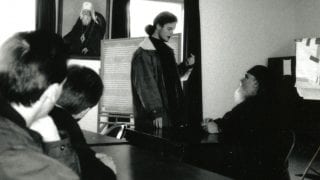
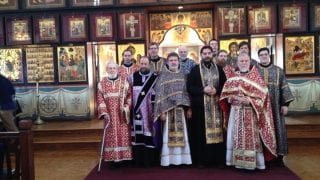






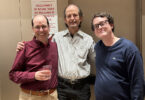
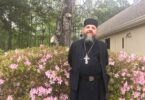

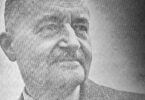
Hudanish, Just learning about you, I have a simple question. How does it written in your bible of Jesus? Ісус or Иисус.
Can you please explain what it means between them two words.
And can you explain why old believers don’t accept word Иисус in their bibles.